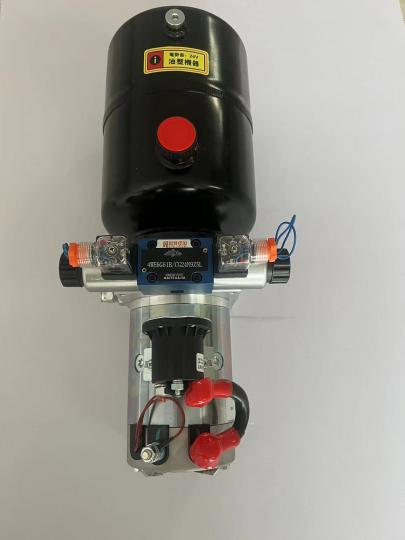Nov . 15, 2024 04:14 Back to list
large hydraulic cylinder product
Understanding Large Hydraulic Cylinders A Comprehensive Overview
Large hydraulic cylinders play a crucial role in various industries, providing the mechanical force needed to move and lift heavy objects efficiently. From construction equipment to manufacturing machinery, these powerful devices are essential for ensuring smooth and effective operations. This article aims to explore the function, components, applications, and maintenance of large hydraulic cylinders.
Function of Large Hydraulic Cylinders
At its core, a hydraulic cylinder converts hydraulic energy into mechanical energy. It works based on Pascal’s principle, which states that pressure applied to a confined fluid is transmitted undiminished throughout the fluid. Large hydraulic cylinders utilize this principle to generate significant force with relatively low energy input, making them ideal for heavy lifting and pushing tasks.
When hydraulic fluid is pumped into the cylinder, it creates pressure that pushes the piston inside, resulting in linear motion. This motion can be harnessed for various applications, including lifting massive loads like construction equipment, pushing heavy machinery, or even steering mechanisms in large vehicles. The efficiency and strength of large hydraulic cylinders make them indispensable in demanding environments.
Components of Large Hydraulic Cylinders
A typical large hydraulic cylinder consists of several critical components
1. Cylinder Barrel The main body that contains the hydraulic fluid and houses the piston. It is designed to withstand high pressure and is typically made from durable materials like alloy steel.
2. Piston This component moves inside the barrel and converts hydraulic energy into mechanical force. The piston is often equipped with seals to prevent fluid leaks.
3. Rod Attached to one end of the piston, the rod extends out of the cylinder to connect with other machinery or structural components.
4. End Caps These are located at both ends of the cylinder and secure the piston and rod in place while containing the hydraulic fluid.
5. Seals and Gaskets These components prevent leakage of hydraulic fluid, ensuring that the system maintains pressure and operates efficiently.
6. Ports Openings in the cylinder body that allow hydraulic fluid to enter or exit the system, controlling the direction of the piston’s movement.
Applications of Large Hydraulic Cylinders
Large hydraulic cylinders are used across various sectors, each with specific applications
large hydraulic cylinder product

- Construction Excavators, cranes, and bulldozers rely heavily on large hydraulic cylinders for lifting, pushing, and digging operations. Their ability to exert high force efficiently makes them essential in heavy construction projects.
- Manufacturing In factories, these cylinders drive presses, lifts, and conveyor systems, facilitating the movement and assembly of heavy components.
- Marine Large hydraulic cylinders are increasingly used in shipbuilding and repair, especially for launching and lifting heavy ship components and assisting in docking operations.
- Mining Hydraulic cylinders are vital in mining machinery, helping in the extraction and processing of materials, moving heavy loads, and operating drilling equipment.
- Agriculture Tractors and other heavy farm equipment utilize hydraulic cylinders for tasks like plowing, lifting equipment, and managing heavy loads.
Maintenance of Large Hydraulic Cylinders
To ensure optimal performance and longevity, regular maintenance of large hydraulic cylinders is essential. Here are some key maintenance practices
1. Regular Inspections Regularly check for signs of wear and tear, including leaks, corrosion, and cracks. Early detection can prevent costly repairs and system failures.
2. Hydraulic Fluid Checks Monitor and maintain the correct level of hydraulic fluid. Contaminated or insufficient fluid can lead to reduced efficiency and damage.
3. Seal Replacement Seals are prone to wear over time. Regularly inspecting and replacing worn seals can prevent leaks and maintain efficiency.
4. Cleaning Keep the exterior of the hydraulic cylinder clean to avoid the accumulation of dirt and debris, which can cause damage to seals and other components.
5. Proper Operation Ensure that operators are trained in the proper use of hydraulic systems to avoid overloading and misuse, which can lead to premature failures.
Conclusion
Large hydraulic cylinders are integral components of modern machinery and equipment across various industries. Their ability to generate significant force through hydraulic energy makes them invaluable for heavy lifting and movement tasks. Understanding their function, components, applications, and maintenance needs can help businesses optimize their operations and ensure long-term efficiency and reliability. As technology advances, we can expect further innovations in hydraulic cylinder design and application, paving the way for even more efficient and powerful machinery.
-
Fork Lift Power Units - Hebei Shenghan | Efficiency, Reliability
NewsJul.13,2025
-
1.5-Ton Turbocharged Cylinder-Hebei Shenghan|Hydraulic Solution,Energy Efficiency
NewsJul.13,2025
-
Auto Hoist Power Units-Hebei Shenghan|Efficiency&Industrial Lifting
NewsJul.13,2025
-
Double Acting Power Units-Hebei Shenghan|Hydraulic Solutions,Industrial Efficiency
NewsJul.13,2025
-
1.5 Ton Lifting Cylinder 70/82-40-290-535 - High-Performance Hydraulic Solution | Hebei Shenghan
NewsJul.13,2025
-
Fork Lift Power Units - Hebei Shenghan | Efficiency&Reliability
NewsJul.13,2025
